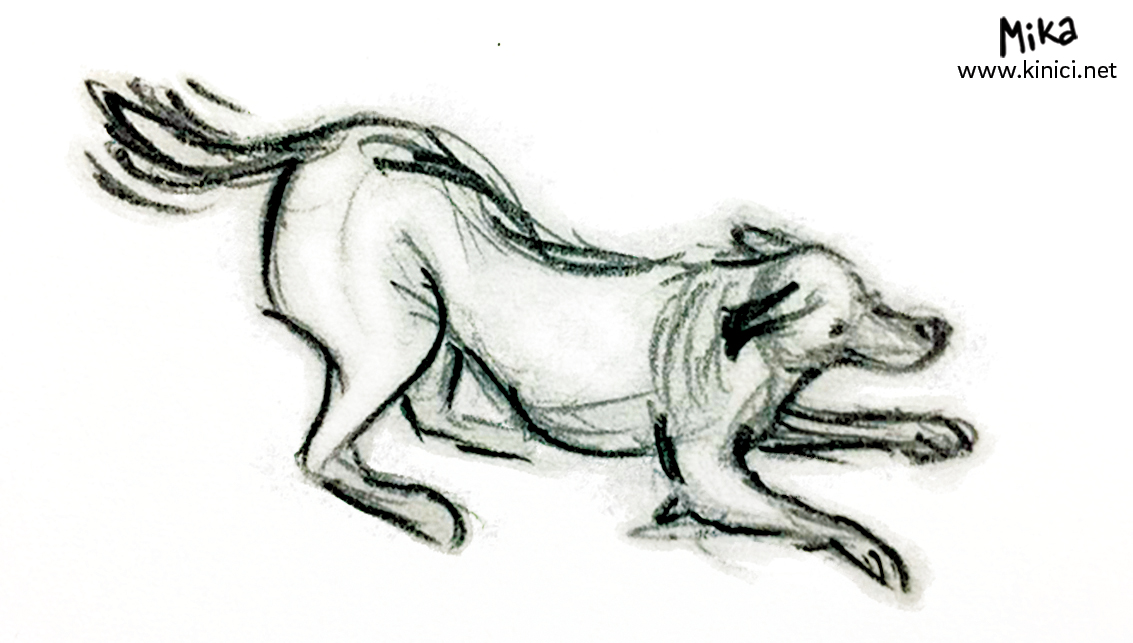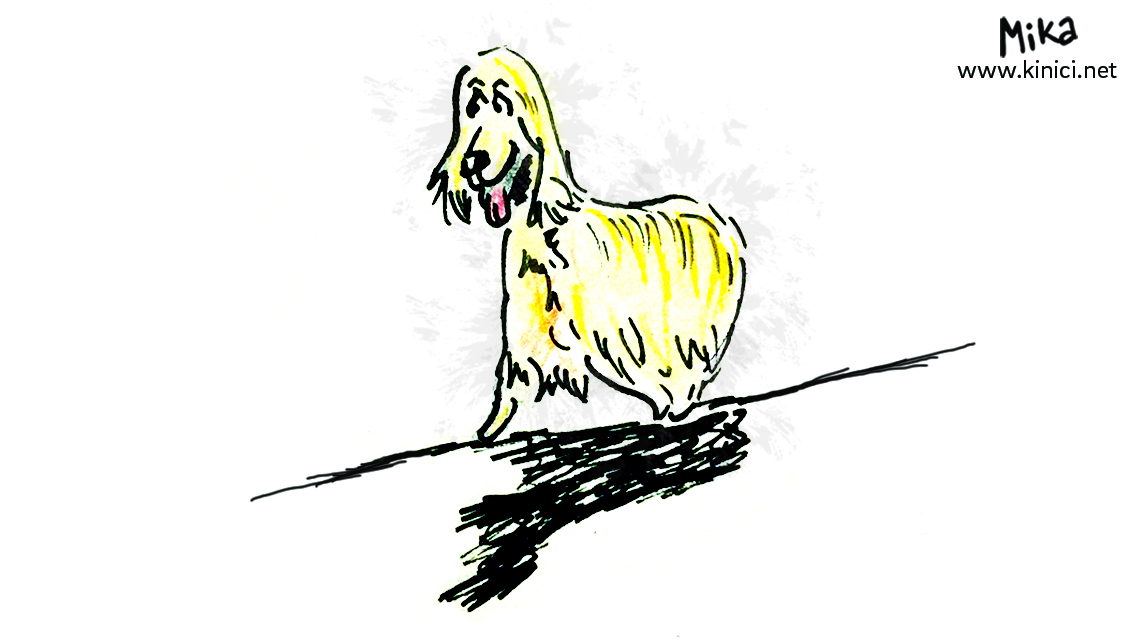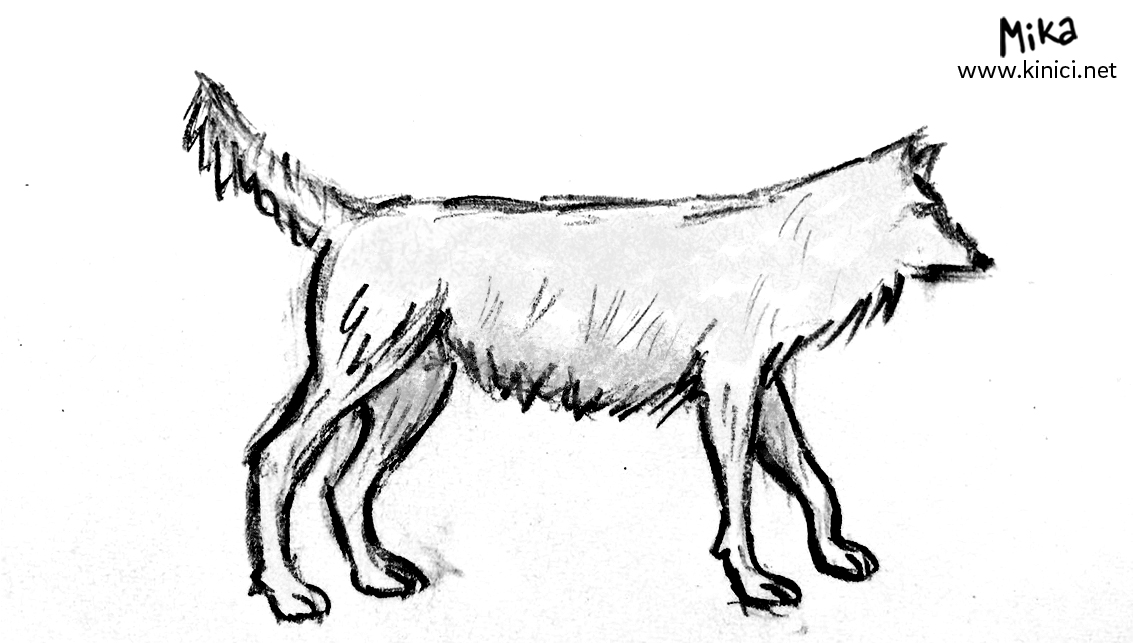With general body position and positioning some body parts, as well as the way the dog moves, certain signals are being sent, to other dogs and other living beings too.
There are three basic postures: high, neutral and low. Cubs begin sending and receiving these signals 2–12 weeks old. Usually, but not always, hight of every body part matches the level of confidence at given moment. The more the dominant dog is, the more it strives to appear bigger. Submissive or frightened dogs strive to appear smaller.
 When the body is in low position or at least in lower than neutral, ears are lower and set backwards ad tail is also in neutral or somewhat lower than neutral position – typical for submissive posture. Very often they would sit or lie down with eyes looking up. However, if the whole body is completely lowered and other body parts do not show submission, usually means sneaking up when the dog will quickly switch from lower to neutral or high posture.
When the body is in low position or at least in lower than neutral, ears are lower and set backwards ad tail is also in neutral or somewhat lower than neutral position – typical for submissive posture. Very often they would sit or lie down with eyes looking up. However, if the whole body is completely lowered and other body parts do not show submission, usually means sneaking up when the dog will quickly switch from lower to neutral or high posture.
 Neutral position is typical for a dog that feels at ease. The head is raised, as well as ears, but the are not set forward. The tail is relaxed, in neutral position, which means toward the ground, but with many breeds the shape of the tail imposes different neutral position. It is not uncommon that the tail is slightly swaying. Usually the mouth is open and the tongue is out.
Neutral position is typical for a dog that feels at ease. The head is raised, as well as ears, but the are not set forward. The tail is relaxed, in neutral position, which means toward the ground, but with many breeds the shape of the tail imposes different neutral position. It is not uncommon that the tail is slightly swaying. Usually the mouth is open and the tongue is out.
 High body position occurs with calm-confident dog and a dominant one. With confident one the ritual of dominance is absent. Head, ears and tail are up, but the dog is not tense. If it wags its tail, it does it in slow or up to moderate speed and with rhythm. The body is between neutral and high position. It is not bristled and it will usually stand still or walk gently without tension. The difference between confident and dominant dog is in details, which is why humans often do not differentiate them or mix them up, but they are still there.
High body position occurs with calm-confident dog and a dominant one. With confident one the ritual of dominance is absent. Head, ears and tail are up, but the dog is not tense. If it wags its tail, it does it in slow or up to moderate speed and with rhythm. The body is between neutral and high position. It is not bristled and it will usually stand still or walk gently without tension. The difference between confident and dominant dog is in details, which is why humans often do not differentiate them or mix them up, but they are still there.
A dog in dominant posture is in high position, with stretched legs as if it is walking on tips of its toes. The neck is also stretched, head is raised as well as tail and ears. Piloerection (medical term for bristling of hairs of animals) may occur on the back and tail. All of this to appear bigger.
